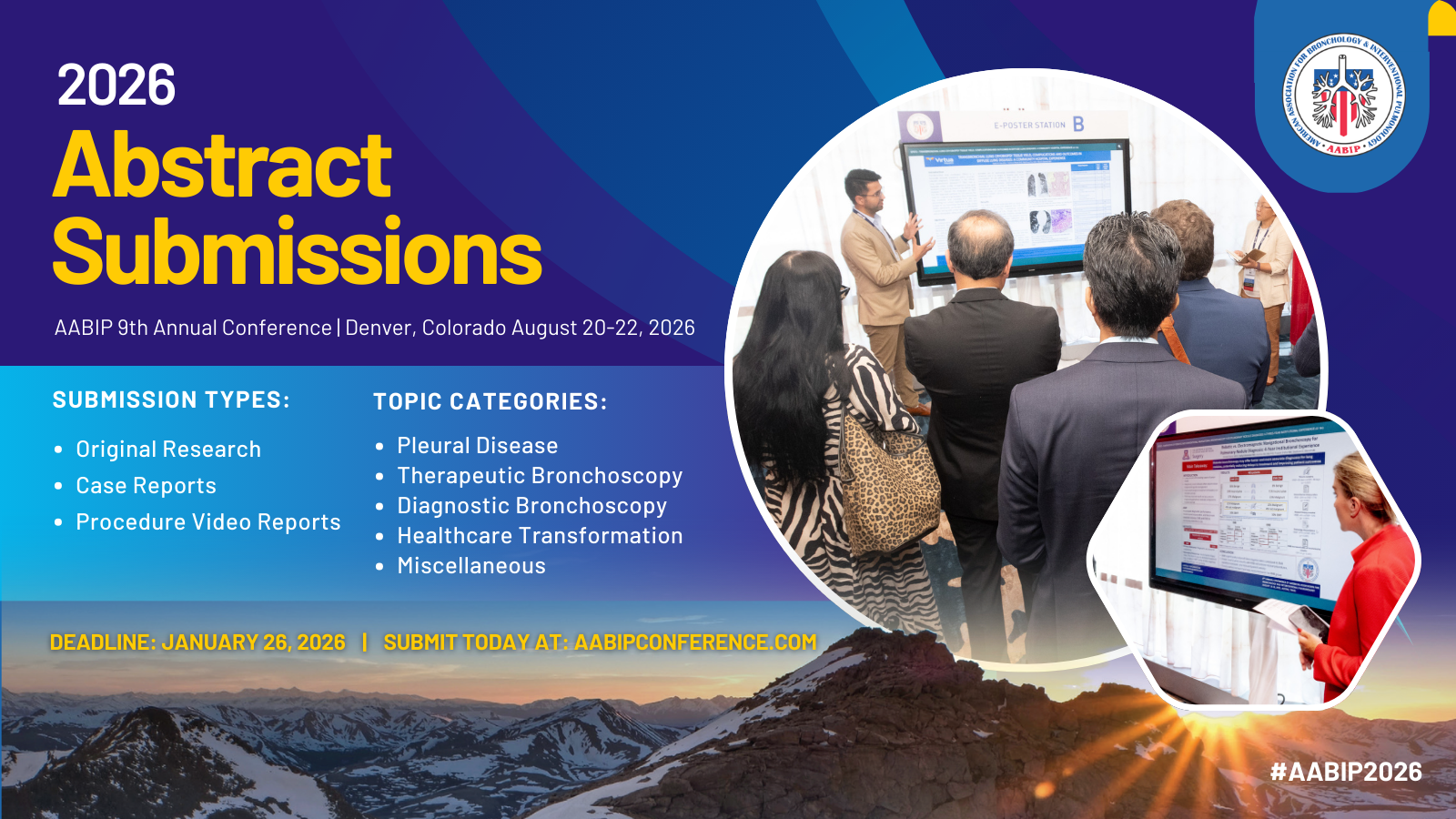IP Fellows Reading List
https://www.ncbi.nlm.nih.gov/pubmed/15947313
Landmark Article
Reference: Asimakopoulos G, Beeson J, Evans J, Maiwand MO. Cryosurgery for malignant endobronchial tumors: analysis of outcome. Chest. 2005;127(6):2007-14.
Background: A retrospective study which explores cryotherapy and cryosurgery for malignant endobronchial disease. It had a prospective data collection and follow-up at a thoracic surgery clinic.
PICO:
Populations:
- Patients with malignant endobronchial lesions needing therapeutic intervention
Intervention:
- Cryosurgery for endobronchial lesions in 1-2 sessions
Comparison:
- Comparison using endobronchial cryosurgery as first line in 2 different groups.
- Group A (2 sessions of cryosurgery 172 patients) vs Group B (1 session of cryosurgery 157 patients)
Outcome:
- Symptoms of dyspnea, cough, and hemoptysis were significantly reduced in both groups after cryosurgery (P < 0.001), group A benefited more than group B.
- Lung function test results improved significantly in group A.
- The mean survival was 15 months (median, 11 months) for group A and 8.3 months (median, 6 months) for group B.
Take Home: Patients who had cryosurgery and external beam radiotherapy showed longer survival, and two sessions of cryosurgery trended toward greater benefit. Cryosurgery appears to be a safe method for palliation of endobronchial malignancies causing airway obstruction.
The application of cryosurgery in the treatment of lung cancer
https://www.ncbi.nlm.nih.gov/pubmed/14969682
Landmark Article
Reference: Maiwand MO, Evans JM, Beeson JE. The application of cryosurgery in the treatment of lung cancer. Cryobiology. 2004;48(1):55-61.
Background: One of the few large prospective studies evaluating cryosurgery for debulking in lung cancer.
PICO:
Populations:
- 476 patients with central endobronchial obstruction in lung cancer stage II – IV
Intervention:
- Use of cryosurgery debulking
Comparison:
Outcome:
- Lung function tests before and after intervention
- Symptoms before and after interventions
- Karnofsky performance scale
- Survival
Take Home: This study demonstrates the same results as the previous study by Maiwand et al with improvement of symptoms, spirometry values and performance scores after cryoablation. It showed a possible survival advantage when used for palliation compared to alternative palliative methods. Cryosurgery is a safe method for palliation of symptoms related to endobronchial malignancies with airway obstruction. Cryosurgery can be considered in patients with inoperable obstructive endobronchial carcinoma.
Safety and Clinical Utility of Flexible Bronchoscopic Cryoextraction in Patients With Non-neoplasm Tracheobronchial Obstruction: A Retrospective Chart Review
https://www.ncbi.nlm.nih.gov/pubmed/26439016
Case Series
Reference: Sriratanaviriyakul N, Lam F, Morrissey BM, Stollenwerk N, Schivo M, Yoneda KY. Safety and Clinical Utility of Flexible Bronchoscopic Cryoextraction in Patients With Non-neoplasm Tracheobronchial Obstruction: A Retrospective Chart Review. J Bronchology Interv Pulmonol. 2015;22(4):288-93.
Background: This is a small study; however, it demonstrates the use of cryotherapy for cryoextraction and for treatment of non-malignant tracheobronchial obstructions.
PICO:
Populations:
- Patients with non-malignant tracheobronchial obstructions of the airway
Intervention:
- Use of flexible cryoprobe with flexible bronchoscopy for relieving non-malignant tracheobronchial obstructions caused by foreign bodies, clots, mucus plugs
Comparison:
Outcome:
- 38 cryotherapy sessions performed on 30 subjects. Cryoprobe extraction was successful in reestablishing airway patency in 32/38 (84%) sessions.
- 24/26 (92%) for blood clots, 4/6 (67%) for mucous plugging, 2/4 (50%) for foreign bodies, and 2/2 (100%) for plastic bronchitis.
- 21/31 (68%) sessions resulted in improvement in oxygenation or ventilation. There was 1 complication related to sedation.
Take Home: Cryoprobe is a very safe and useful tool for cryoextraction and relieving non-malignant tracheobronchial obstructions with flexible bronchoscopy.
Airway spray cryotherapy: initial outcomes from a multiinstitutional registry
https://www.ncbi.nlm.nih.gov/pubmed/22516831
Clinical Trial
Reference: Finley DJ, Dycoco J, Sarkar S, et al. Airway spray cryotherapy: initial outcomes from a multi-institutional registry. Ann Thorac Surg. 2012;94(1):199-203.
Background: Multi-institutional study analyzing feasibility of endobronchial spray cryotherapy for treatment of malignant airway tumors.
PICO:
Populations:
- Patients with endobronchial malignant airway disease needing therapeutic intervention.
Intervention:
- Rapid freezing and thawing using a noncontact system to deliver liquid nitrogen (2 to 4 psi) through an endoscopic catheter Spray cryotherapy (SCT) for treatment of endobronchial malignant airway disease obstruction.
Comparison:
Outcome:
- 80 patients (45 males [56%]) underwent 114 treatments. All patients were treated with minimal blood loss. Airway obstruction exceeded 75% in most of the lesions treated. All but 1 patient had airway patency after treatment. There were 21 intraoperative events (19%) including 3 pneumothoraces, one requiring chest tube placement.
Take Home: SCT can be used in patients with highly vascular tumors, with reduced bleeding complications and a low overall complication rate. Caution is needed before SCT is used on a widespread basis, given the intraoperative complications.
Treatment of Benign Tracheal Stenosis Using Endoluminal Spray Cryotherapy
https://www.ncbi.nlm.nih.gov/pubmed/27532803
Case Series
Reference: Bhora FY, Ayub A, Forleiter CM, et al. Treatment of Benign Tracheal Stenosis Using Endoluminal Spray Cryotherapy. JAMA Otolaryngol Head Neck Surg. 2016;142(11):1082-1087.
Background: Use of SCT in treatment of benign tracheal and subglottic stenosis to evaluate if it helped with decreasing recurrence of this debilitating disease.
PICO:
Populations:
- Patients with benign tracheal stenosis requiring treatment
Intervention:
- Use of SCT for treatment of tracheal stenosis. Delivery of 4, 5-second SCT cycles and 2 balloon dilatations.
Comparison:
Outcome:
- 26 patients underwent 48 SCT sessions. 23 patients (88%) had grade III or IV stenosis. Spray cryotherapy was successfully used without any substantial intraoperative or postoperative complications.
- Median (range) follow-up of 11 (1-26) months.
- All patients had improvement in symptoms before the institution of SCT. However, at the last evaluation after induction of SCT, 4 (15%) had grade III or IV stenosis compared to the 23 (88%) prior to SCT.
- Patients with GPA required significantly fewer SCT procedures during the study period. Mean (SD) intervention rate decreased from 3.8 (3.4) per year prior to induction of SCT to 1.6 (0.8) per year after the institution of SCT.
Take Home: Spray cryotherapy was a safe adjunct modality to accomplish airway patency in patients with benign tracheal stenosis. Although efficacy evidence is limited for SCT, it may be useful for patients who have experienced treatment failure with conventional modalities. Additional trials are warranted for further evaluation of this modality in terms of its treatment sustainability and long term side effects in this population of patients.
|








